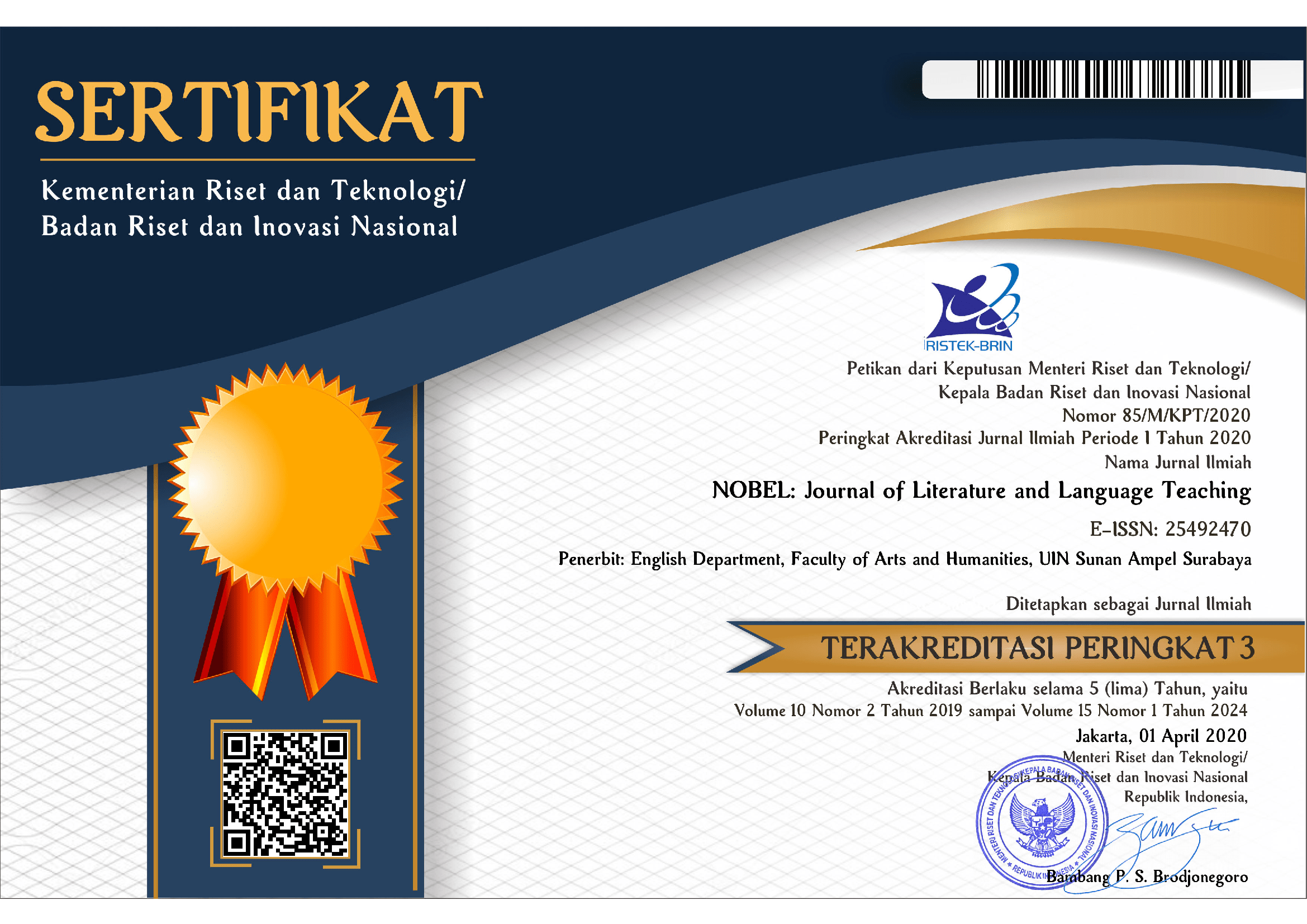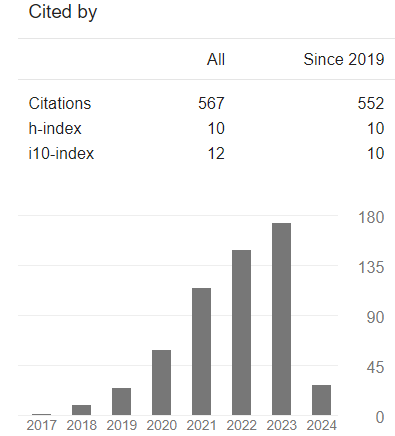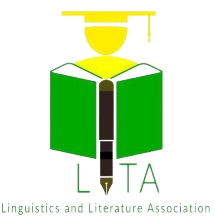The Identity of the Main Character in Nathaniel Hawthorne's Dr. Heidegger's Experiment
A Linguistic Analysis
DOI:
https://doi.org/10.15642/NOBEL.2018.9.2.129-147Keywords:
discourse analysis; identity construction; indexicality principleAbstract
This study analyzes the language used in the construction of the personal identity of Dr. Heidegger through the labels attached to him, both given by self and by others, and his stancetaking. The researcher applies Discourse Analysis to analyze the main character’s utterances. In addition, the researcher also uses Indexicality Principle by Bucholtz and Hall (2005) as a mechanism to analyze identity. Qualitative content analysis is used to analyze thoroughly and interpret text data to draw inference towards the utterances on the short story.
The result of the study show that Dr. Heidegger is labeled mostly with negative words by others, however, he responded to combat these labels by using re-appropriation or by revaluing the existing labels. Moreover, the stances taken by Dr. Heidegger are found to position himself among others. Together with the labels given by self and others, and his interlocutor(s) in his talk-in-interactions the findings reveal that the he is a strange old man, who is very curious and knowledgeable. Lastly, the conclusion can also be drawn that language and discourse are central to the construction of identities that are not always determined by a person himself, but also bound up with how others perceive him.
Downloads
References
Construction. Handbook of Identity Theory and Research (603-628). Springer doi: 10.1007/978-1-4419-7988-2_25 (pp. 177-199).
BUCHOLTZ, MARY (2004). Language and Identity. A companion to Linguistic
Anthropology, 369-394
BUCHOLTZ, M. & HALL, K. (2005). Identity and Interaction: A Sociocultural
Linguistic Approach. Discourse Studies Vol. 7 (4-5): 585-614.
DE FINA, A., BAMBERG, M., & Schriffin, D. (2006). Discourse and Identity. Journal
of Pragmatics, Volume 39, Issue 7, 1324-1328.
DU BOIS, JOHN (2007). The Stance Triangle in R. Englebertson, Stancetaking in
Discourse: Subjectivity, Evaluation, Interaction. Amsterdam/Philadelphia: John Benjamins Publishing Company.
FATMAWATI, FATMAWATI (2015). Mikhail’s Personal Identity Construction in
Paulo Coelho’s The Zahir. NOBEL: Journal of Literature and Language Teaching, 6(2), 97-120.
GALINSKY, A. D., et al. (2003). The Reappropriation of Stigmatizing Labels: Implications for Social Identity. Identity Issues in Groups Research on Managing Groups and Teams, 5, 221–256.
KHOKHAR, S., Memon, S., & Siddique, K. (2016). “Exploring Role of Language in
Constructing Individual Identities: A Case Study of Sindh, Pakistan. International Journal of Humanities and Social Sciences, Vol. 6, No. 3, pp 234-241.
KOLLER, VERONIKA (2012). How to Analyse Collective Identity in Discourse-
Textual and Contextual Parameters. Critical Approaches to Discourse Analysis across Disciplines, Vol 5(2): 19-38.
KUREČIĆ, PETAR (2012). “Identity and Discourse in Critical Geopolitics: A
Framework for Analysis. Retrieved from: https://bib.irb.hr/datoteka/794654.Identity_and_Discourse_in_ Critical_Geopolitics__paper_Kurecic_final.pdf on January 12, 2018.
NALALIA, VEVA DESI (2017). Identity Construction among Facebook Users.
Thesis. State Islamic University of Sunan Ampel Surubaya. Retrieved from http://digilib.uinsby.ac.id/18086/ on January 9, 2018.







